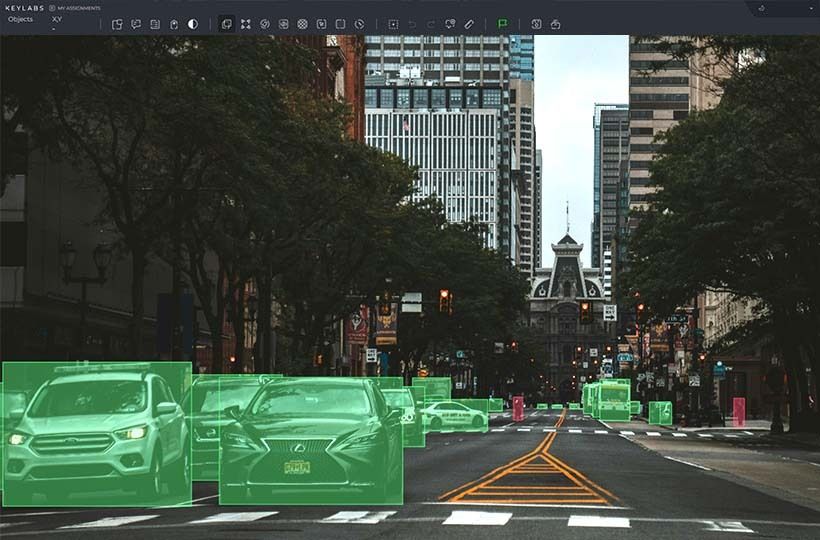Analysis of Open Source and Commercial Annotation Tools
Commercial platforms promise out-of-the-box solutions, while leading open source tools offer flexibility for specialized needs. Medical imaging teams using automated annotation tools complete projects faster, but enterprise-scale deployment requires hybrid approaches.
Evaluate technical capabilities through four lenses: depth of workflow integration, quality assurance mechanisms, collaboration features, and long-term cost trajectories. Financial institutions processing millions of transactional images require annotation software different from healthcare teams annotating MRI scans. Choosing the right platform selection is the difference between scalable success and operational bottlenecks.
Quick Take
- Market growth forecasts show an expansion of data annotation infrastructure.
- Tool comparison impacts model accuracy.
- Medical imaging teams annotate data faster with AI-powered workflows.
- Enterprise deployments often require hybrid commercial platforms.
- Cost analysis should include hidden maintenance and integration costs.
- Real-time collaboration features reduce editing cycles.

Understanding Open Source Annotation Tools
Customizable data labeling platforms are transforming the production of AI training materials. These solutions allow organizations to modify existing frameworks rather than build them from scratch. Technical teams embed their code into workflows to tailor systems to handle specialized formats, such as medical scans or satellite imagery.
Zero licensing fees benefit budget-conscious enterprises. Startups and research labs choose these platforms for experimental projects that require frequent adjustments. Healthcare teams use this flexibility to implement HIPAA-compliant quality checks.
Three benefits define these systems:
While customization requires technical expertise, the long-term benefit is having complete control over labeling protocols. Teams stay compliant with evolving project needs without vendor lock-in.
Benefits of Open Source Annotation Tools
Organizations that use collaborative development environments are faster at implementing AI training pipelines.
Flexibility and customization. Open source tools modify the source code to meet the project's specific needs. You can change the interface, annotation types, database integrations, or ML models.
There are no licensing restrictions. Most open source tools are free to use and deploy, which is important for research or startup projects. This reduces costs compared to commercial platforms.
Code transparency and data security. With open source tools, you can verify precisely how data is processed, which is essential when working with confidential or regulated datasets. This lets you host the system on your servers and maintain data control.
Active community and support. Open source tools have large communities of developers who improve functionality, share plugins, fix bugs, and add new features.
Integration with ML pipelines. Many open source tools support APIs and SDKs. This simplifies integration with machine learning pipelines, MLOps systems, or data version control tools.
Scalability and control of infrastructure. You can decide for yourself where and how to deploy the system, locally, in a private cloud, or in docker containers. This ensures high performance.

Overview of Commercial Annotation Tools and Their Features
Commercial platforms have an extensive feature set. Such annotation software platforms have an intuitive interface, a user management system, flexible role configuration, and data version control. They support various types of markup, from classic bounding boxes, polygons, and keypoints to segmentation, text classification, entity recognition, and audio analysis.
The key advantage of commercial platforms is professional support and stability guarantees. Vendors provide regular updates, cloud infrastructure, and automation tools. Such systems have built-in quality control modules, annotation team performance metrics, and audit capabilities.
Commercial platforms are also focused on security and compliance with standards. They support GDPR, ISO/IEC 27001, SOC 2, etc. This allows you to work with confidential medical, defense, or finance datasets. Integrations with cloud storage, data management systems, and MLOps platforms are also standard.
The Keylabs platform offers a complete toolkit for commercial annotation software, combining markup tools with project management and automation features. It supports image annotation, video, and 3D point clouds and integrates with virtually any customer model.
Key features include: object interpolation between video frames, a "magic wand" for quick object selection, multi-level annotation with parent-child relationships, user role control, and team performance analytics.
Keylabs is the right solution for medium to large annotation projects that require a markup interface, a controlled process, quality, scalability, and integration with the ML ecosystem.
Feature Comparison: Automation, Quality Assurance, and Scalability
Data annotation platforms combine process automation, quality assurance, and scalability to meet the needs of large projects. These three components determine the efficiency and accuracy of annotation teams, especially in areas where the speed and quality of annotation impact the results of machine learning models.
FAQ
What factors determine whether to use open-source or commercial annotation tools?
The choice between open-source and commercial tools depends on the project's scale, budget, data security requirements, and the need for professional support and automation.
How do commercial tools ensure data security compared to open-source alternatives?
Commercial tools provide built-in security standards, encryption, and regulatory compliance, while open-source solutions require self-configuration and data protection controls.
What quality control features distinguish paid annotation platforms?
Paid annotation platforms differ in their QA mechanisms: automated checks, multi-level peer review, accuracy metrics, and team performance analytics.
How do automation capabilities differ between free and paid annotation solutions?
Free solutions usually limit automation to basic tools and manual support. However, paid platforms offer ML-powered markup, object interpolation, and semi-automatic algorithms to speed up the process.
